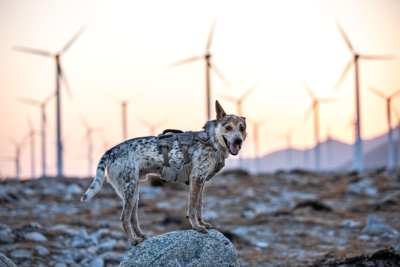
Dogs are enthusiastic and loving. But wildlife doesn’t see our gentle canine companions through the same lens we do. Dogs, coyotes and foxes are all part of the canid family, and birds and many other animals see them as predators. The presence of a dog of any size merely passing by a nest on the ground, on the beach or in grasslands, can cause the nesting bird to fly off to lure the dog away, leaving the eggs or chicks vulnerable to predation. So how is it possible that dogs are helping scientists with bird conservation?
Dogs are easy for us to work with and have some amazing qualities – like their extremely sensitive sense of smell – believed to be 100,000 times stronger than ours. That coupled with their innate agility, intelligence, and desire to be busy makes them great candidates for active duty. Many dogs are employed as critical members of SAR (search and rescue) teams after disasters to find people. But conservation work with dogs can be trickier given the disturbance they can cause to wildlife. Some scientists are now lassoing dogs’ unique qualities and finding ways to have them do what they love doing on behalf of wildlife – a win-win for everyone!
Dogs are really great as part of the rat detection force to monitor islands that have eradicated invasive rat populations to ensure they remain free of rodents. They can also help determine the impact on wildlife of turbines in wind farms, and more. This article from Audubon tells how dogs can play a role in bird conservation, and have fun doing it!